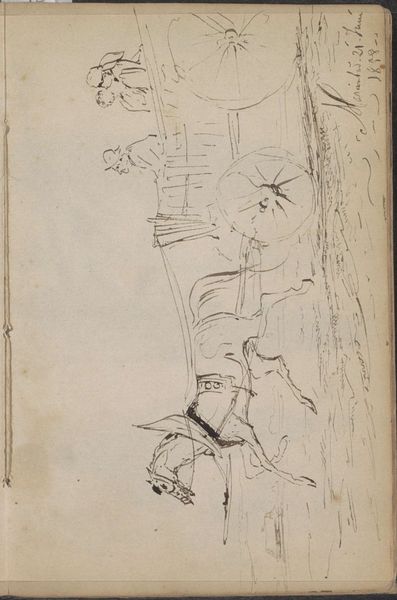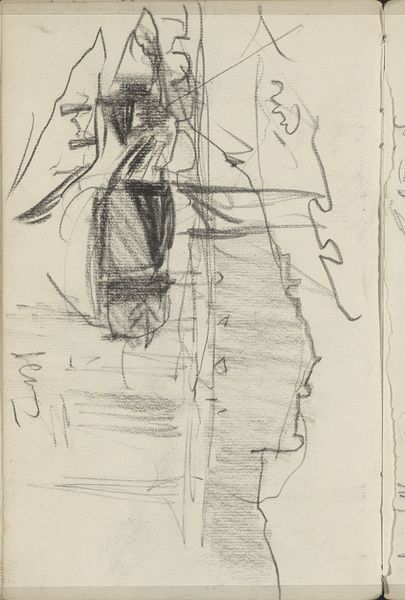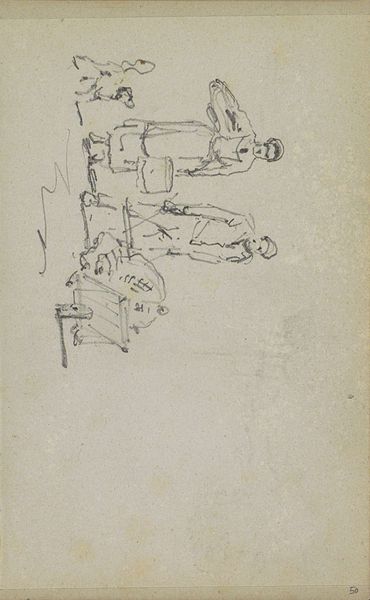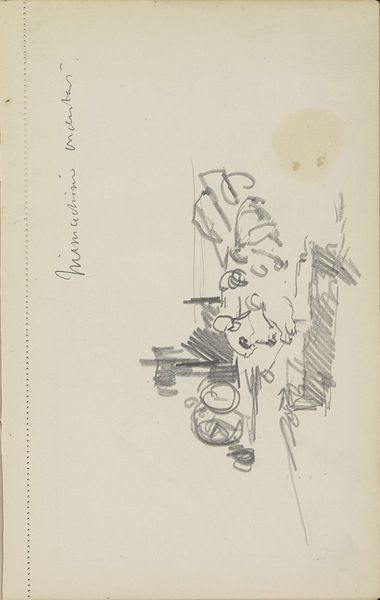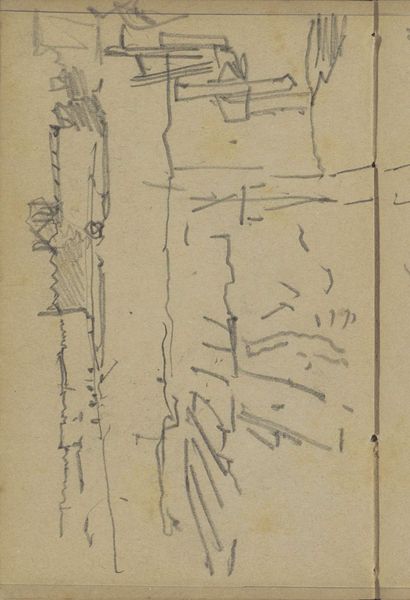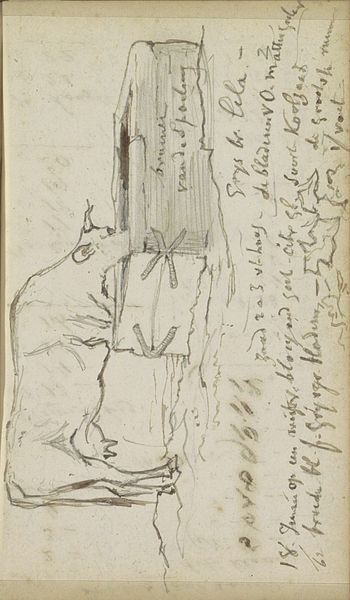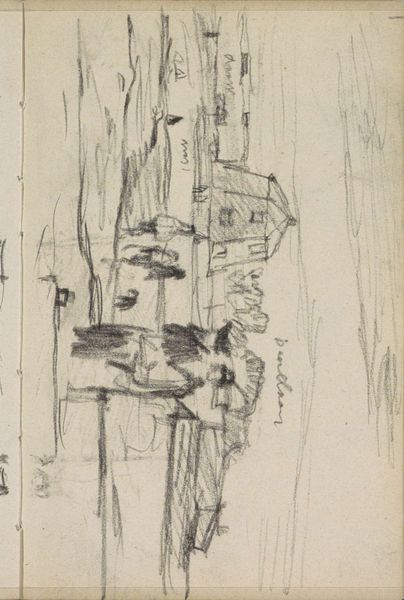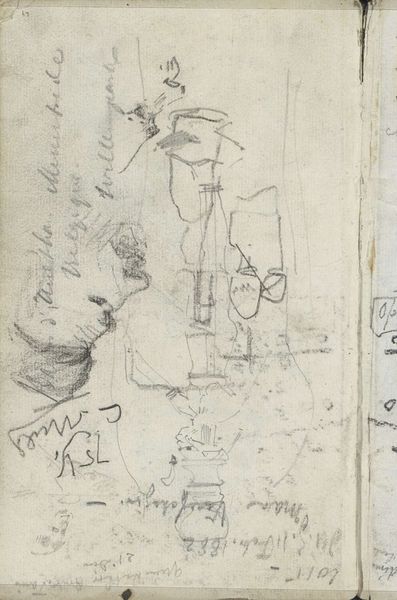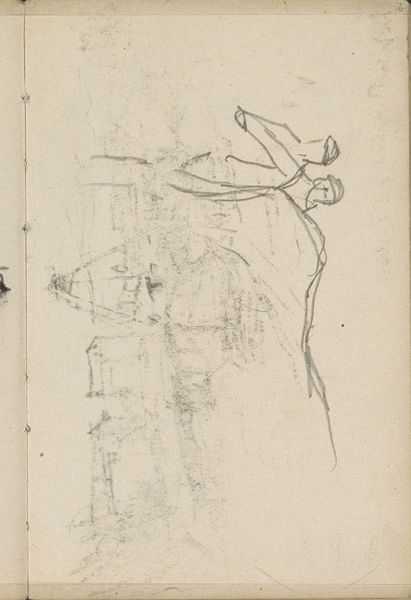
Copyright: Rijks Museum: Open Domain
Editor: Here we have "Bohemian farm cart with firewood" rendered in pen and ink by Johannes Tavenraat in 1858. It's a sketch, very loose, and yet I feel the weight of the wood being hauled. What's your take? Curator: That weight, the literal materiality of the wood, is precisely where my eye goes. Consider the labour embodied here: the felling of the trees, the stacking of the wood, the slow trudge of the oxen. These are processes, actions performed by bodies in a specific social context. What does that labor signify to you? Editor: I suppose I hadn’t thought about the labor so much. I was caught up in the simplicity of the drawing itself, how little is needed to convey so much. Curator: But the simplicity *is* deceptive. Think about who has the leisure to make such sketches. While Tavenraat is making art, other people are working, extracting resources. He transforms firewood into art: What kind of labour allows this act of refinement and, by extension, art creation itself? How might the consumption of wood relate to artistic consumption? Editor: So, the firewood becomes less about a picturesque landscape, and more about systems of production and consumption? Curator: Exactly. Tavenraat’s rapid marks don't obscure this for me; they highlight a material transformation, one that depends on hidden, often unequal labor practices, made all the more stark by this quick sketch in ink. Editor: I see what you mean. Thinking about the materials, the ink and wood, and who gets to use them, definitely gives me a richer understanding. Curator: Indeed. Looking at art through its materiality exposes complex social relations and modes of production.
Comments
No comments
Be the first to comment and join the conversation on the ultimate creative platform.
